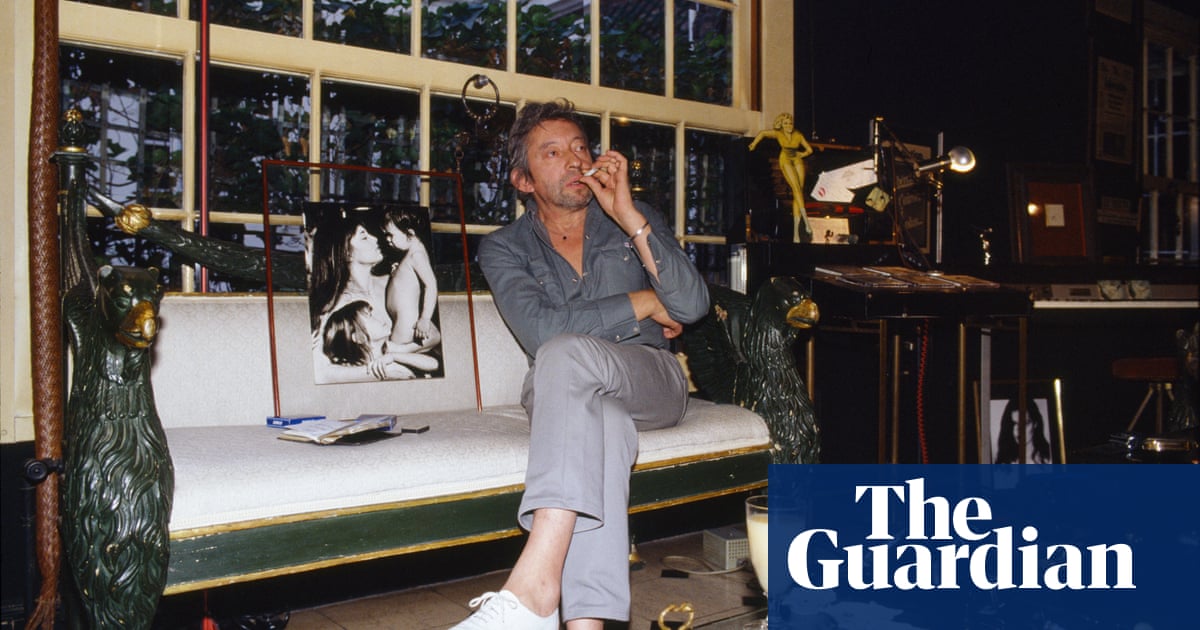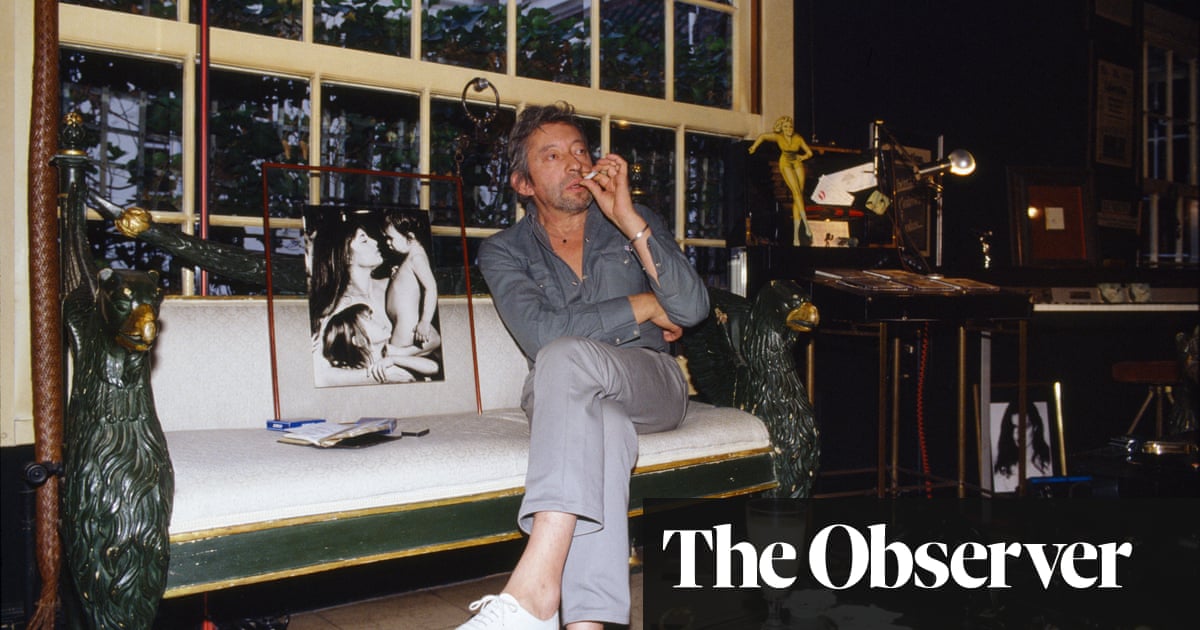
Since his death in 1991, fans of the singer-songwriter and French cultural icon Serge Gainsbourg have turned his home in a quiet street in the chic 7th arrondissement of Paris into a shrine.
For more than 30 years they have painted graffiti and portraits on the outside walls and left quotes and messages of love and affection in homage to the controversial artist hailed as both a great poet and a grandstanding provocateur.
Now the property, owned by his daughter, the actor Charlotte Gainsbourg, and kept as it was when he died – complete with overflowing ashtrays of filterless Gitane cigarettes and a collection of police badges – is to open to the public as Maison Gainsbourg.
It was at 5 bis rue de Verneuil that Gainsbourg composed music at the piano in the main living room. Several of his album cover photographs were taken inside the house, much of which is decorated in black, including the main bedroom.
Among the 25,000 items in the property are artworks, photographs, musical instruments and Gainsbourg’s clothes as well as paintings by Salvador Dali and Claude Lalanne.
“Well, this is my house. I don’t know what it is: a sitting room; a music room; a mess; a museum …” Gainsbourg said while conducting a televised visit to the property in April 1979.
He described it as an “apparent mess” but one where “everything is calculated according to particular rhythms”.
Gainsbourg bought the house in 1969 and lived in it initially with the British-born actress Jane Birkin – Charlotte’s mother – with whom he sang the banned hit Je t’aime … moi non plus the same year. The couple was together for 12 years, but separated in 1980. He and Birkin remained close, but Gainsbourg’s public appearances became even more drunken and chaotic.
While Gainsbourg was lauded as one of France’s greatest songwriting poets and a Renaissance man who could also paint, draw, compose, direct and act, Gainsbarre, his troubled alter-ego, was the darker side of his Jekyll and Hyde persona.
His later years were marked by controversy: in 1984, he sparked a scandal performing a duet with Charlotte, then aged 12, called Lemon Incest, the music video for which featured a topless Gainsbourg lying on a bed with his daughter.
That same year, he partially burned a 500-franc note on television, then one-sixth of the net monthly wage, in protest at tax rises. Other television appearances featured inappropriate sexual advances and at least one drink-fuelled misogynist outburst.
In 2006, the music journalist Nick Kent spent a week with Gainsbourg and wrote that while regarded as a “cultural deity” by his compatriots, in reality the artist fell some way short of deserving of hero worship.
“These days, you read a lot about Serge Gainsbourg – the genius, the subversive, the playboy lover – but the Serge Gainsbourg I had the misfortune to encounter was a raging alcoholic above all else,” Kent wrote in the Guardian. “Gainsbarre, he called his alcoholic alter-ego – a dissolute, disgusting, death-fixated individual perilously close to clinical insanity. I wish I could tell you I enjoyed at least one meaningful conversation with him during that week, but I’d be lying if I did.”
Gainsbourg, who was reported to smoke five packets of cigarettes a day, died at his Paris home following a fifth heart attack in March 1991, aged 62. In a tribute, the then French president François Mitterrand said: “He was our Baudelaire, our Apollinaire … he elevated the song to the level of art.”
His grave at the Montparnasse cemetery in Paris, where Jean-Paul Sartre and Simone de Beauvoir are also buried – is one of the most visited.
As well as the house at 5 bis rue de Verneuil, a museum will open opposite with a bookshop and a cafe-piano bar called le Gainsbarre.
Charlotte said it had taken a while for her to finalise the project but was determined the house would be ready to open to the public on 20 September.
In 2021, she told AFP: “In the first 10 years (after his death) when I was the most sure of the project, it was complicated to make it happen. And then, I went backwards because it was all that I had left of him, so I kept it like a treasure.”
Her return to France during the Covid pandemic from the US where she had spent several years allowed her to “take a step back … and realise that it had to be done. For the public but also for my mental health. I have to be able to detach myself from it. It has to be a place that is truly rooted in Parisian heritage, that is accessible.”
She added: “It’s his mansion, we’re not going to discover things about his work but the framework of his work. It’s him, his personality, it’s quite surprising. We have the image of artists who are in immense, luxurious spaces, but here it is relatively modest.
“At the beginning, it was the family house, with my mother, my sister, him and me. In my mother’s (Jane Birkin’s) time, there was very little, and then there was more and more of a very arranged mess. He turned it into a museum full of objects while he was alive, and it was hard to walk around without being afraid of breaking something.”
She said she particularly recalled a bust of her mother. “It’s a cast of her body. It’s very, very beautiful. At first it was in plaster, then he made it again in bronze.”
The Maison Gainsbourg website says it is the “first cultural institution dedicated to Serge Gainsbourg” and expects about 100,000 visitors a year. Within hours of the first house tour tickets going online they sold out.
In 2012, the artist’s handwritten shopping lists fetched €7,700 at auction. The following year, four cigarette butts from Gitanes smoked by Gainsbourg and a box of matches sold for €500 at auction.












